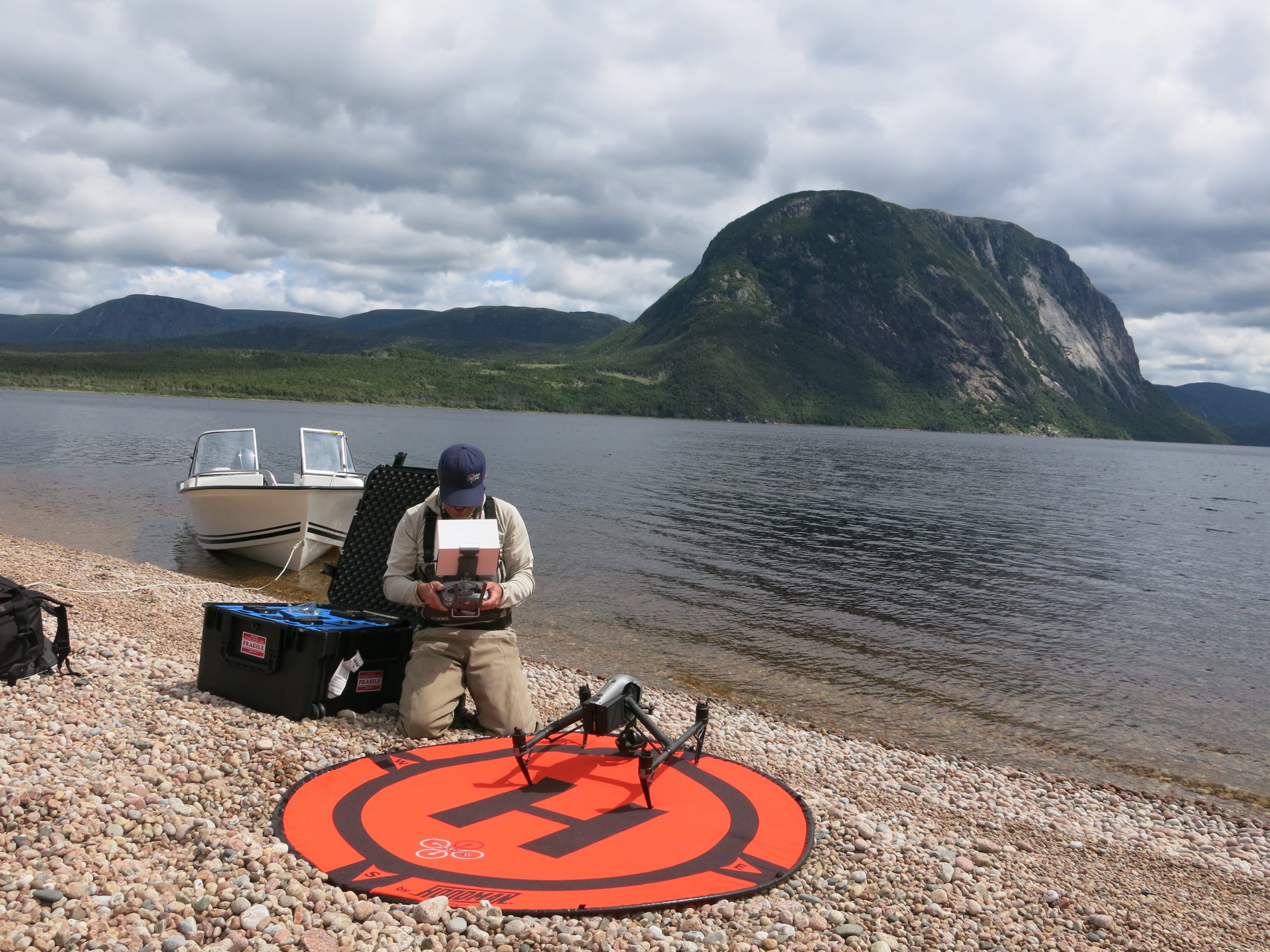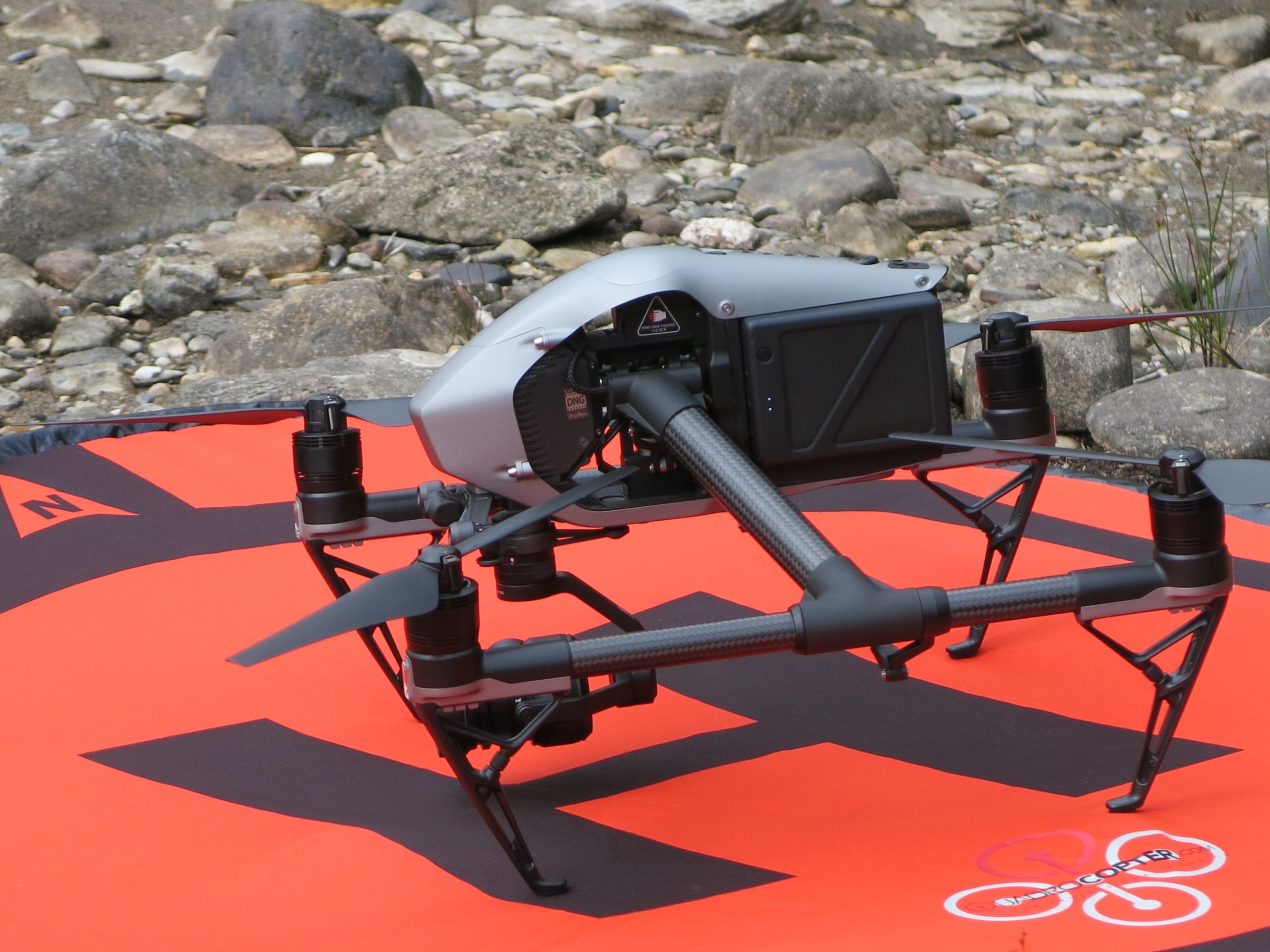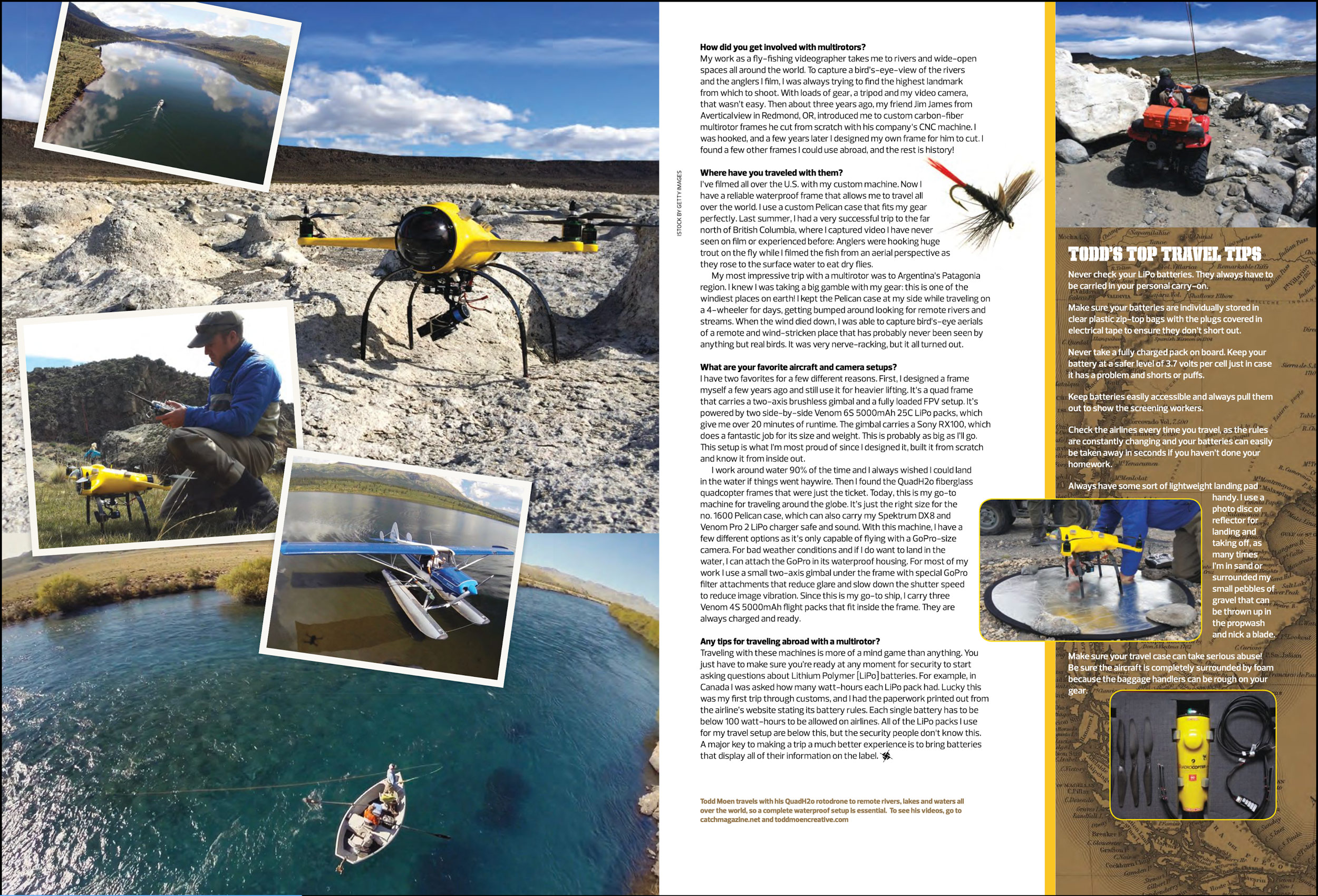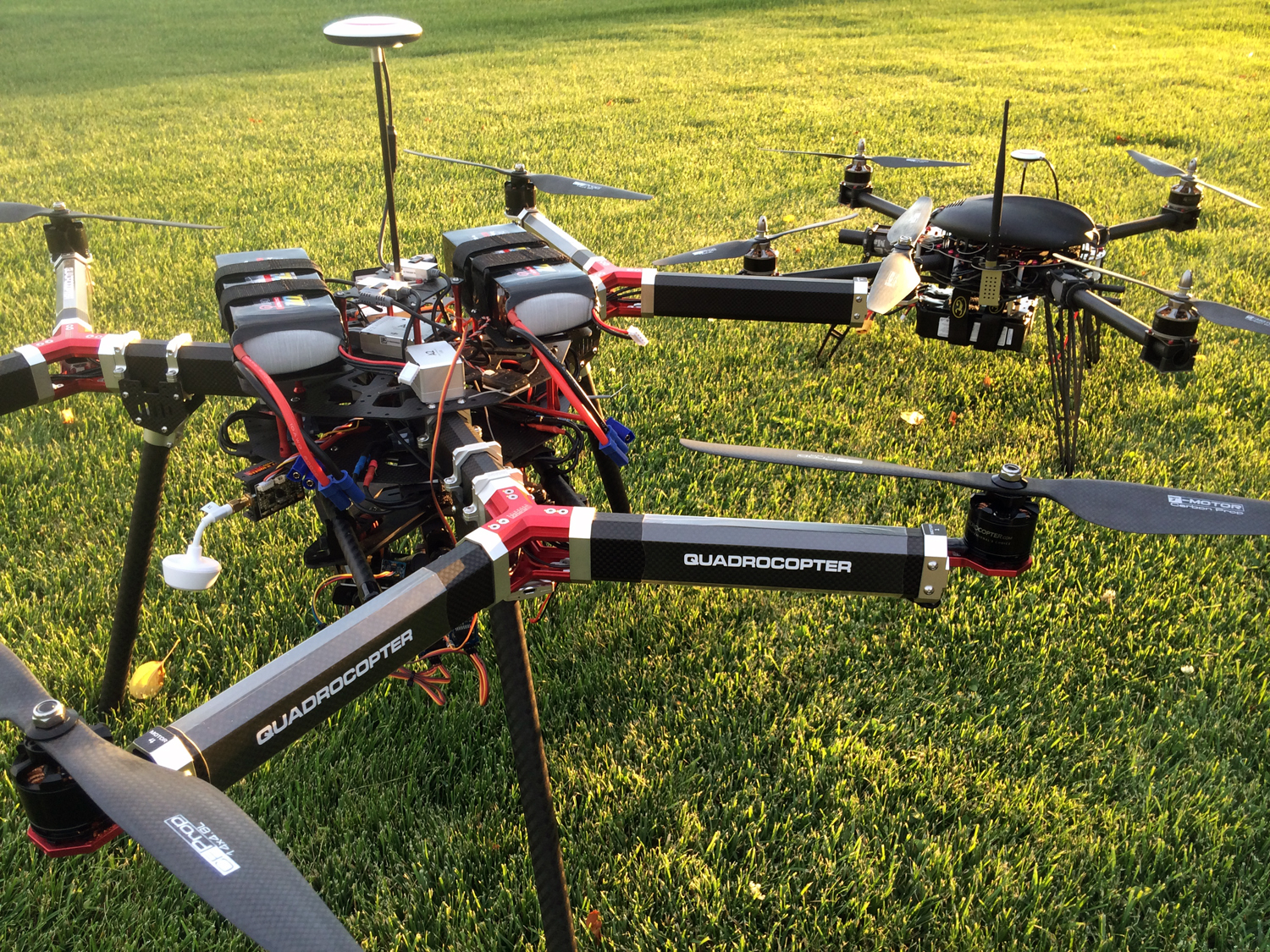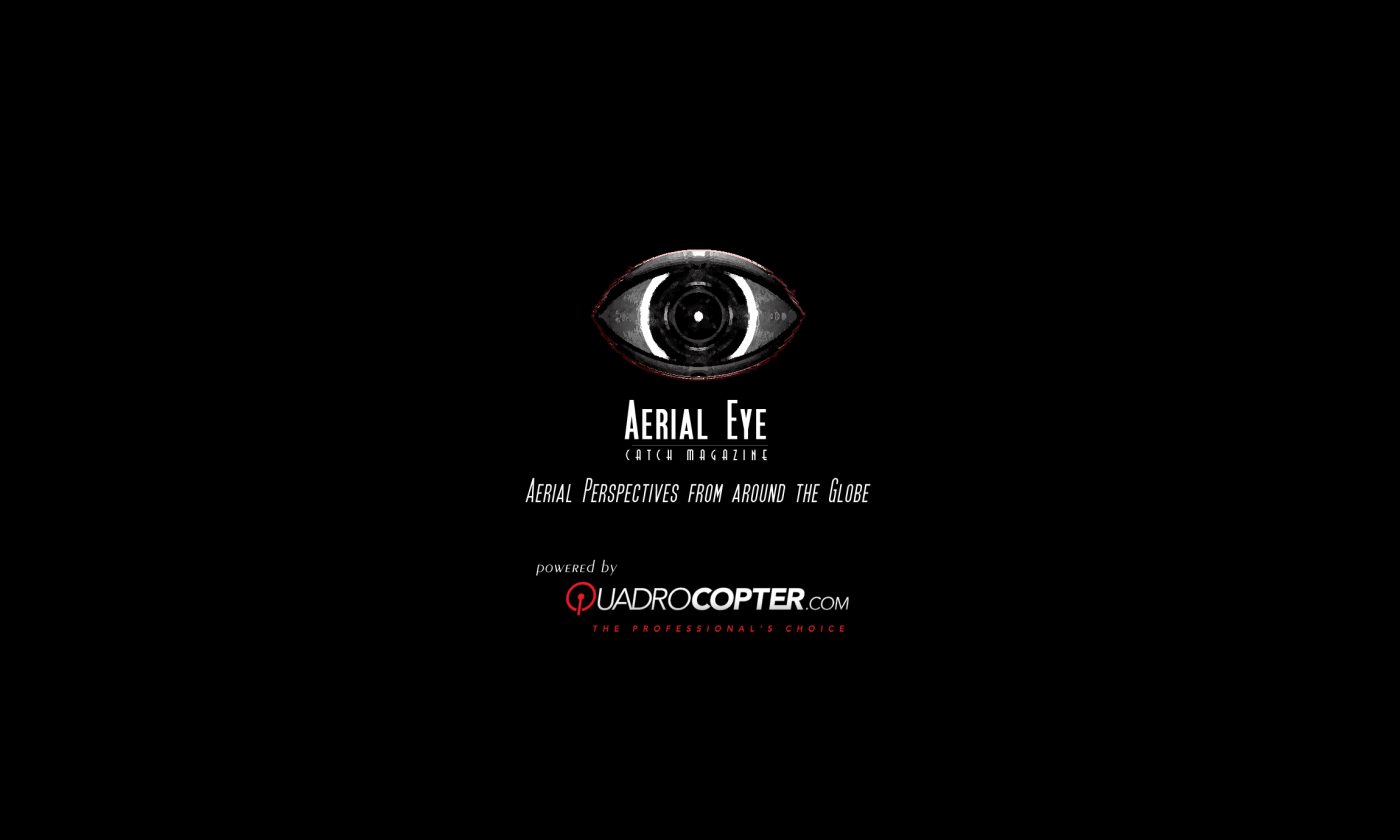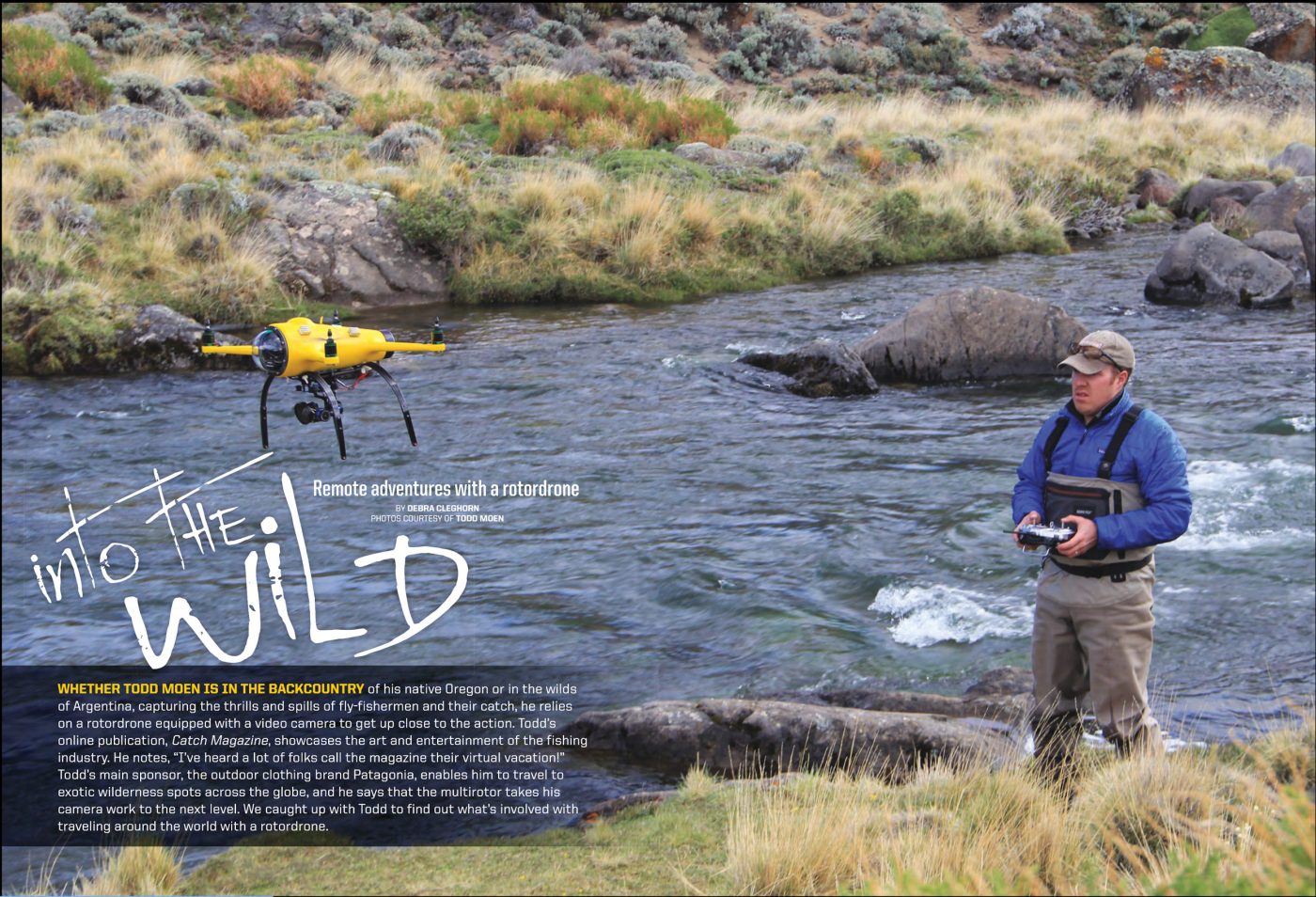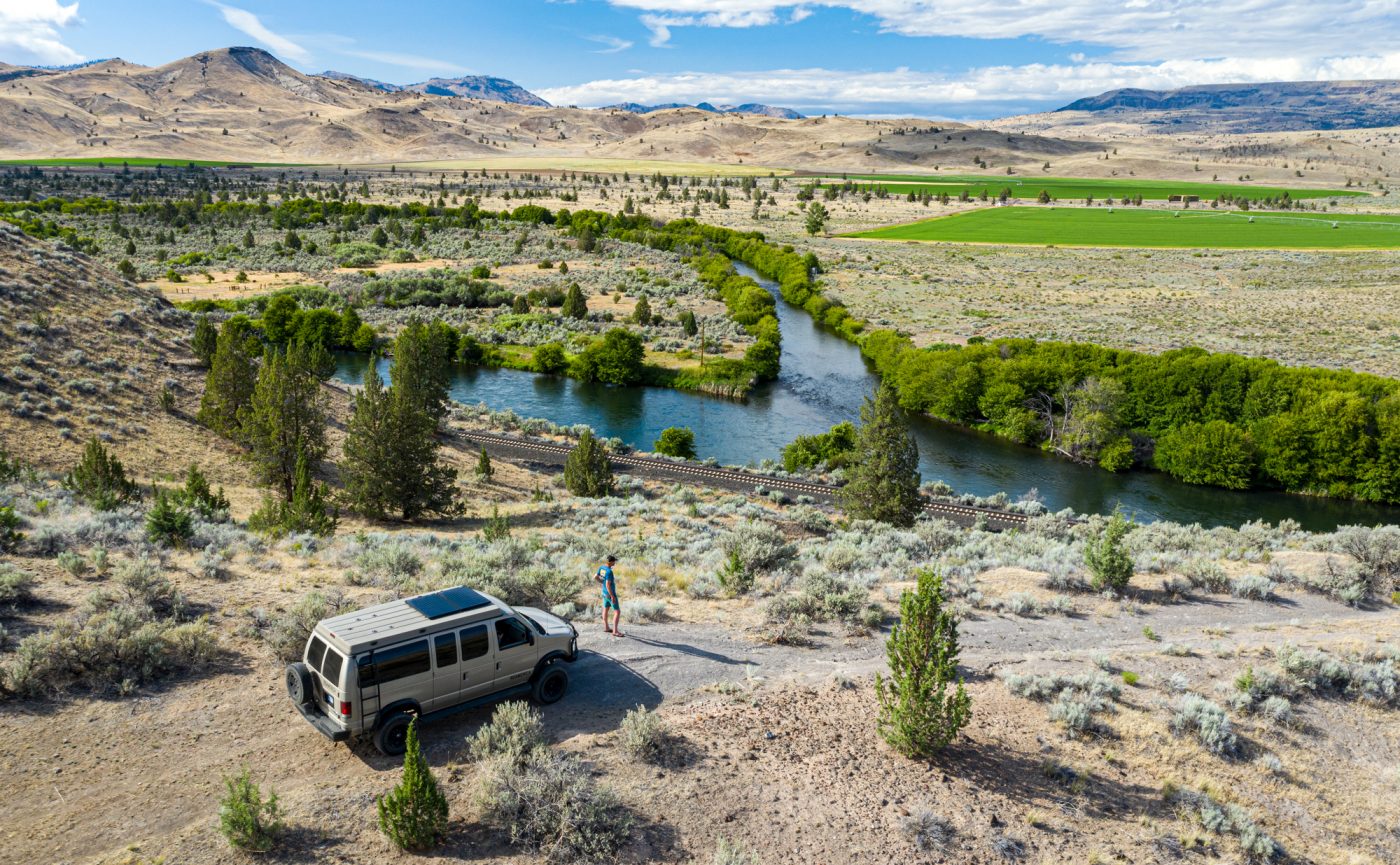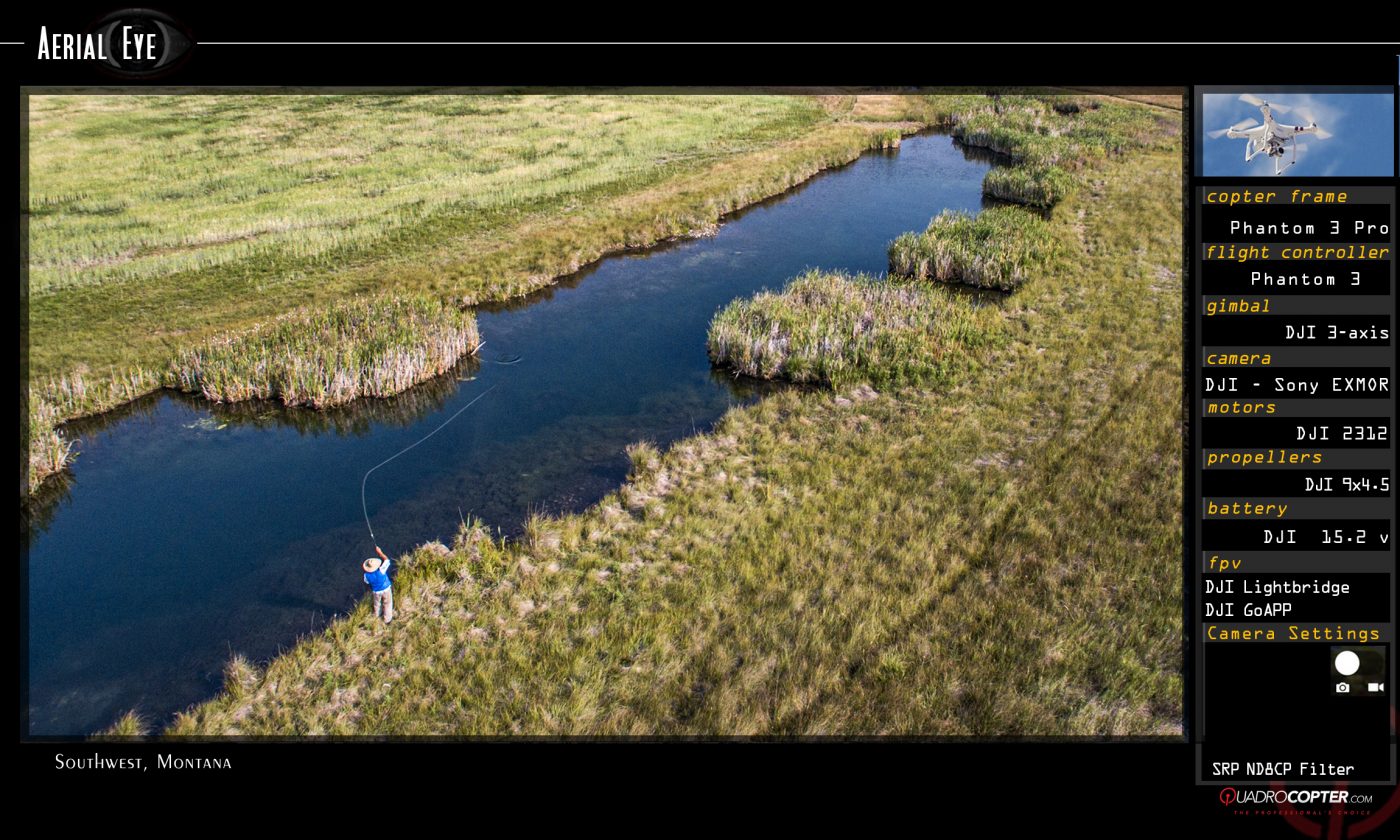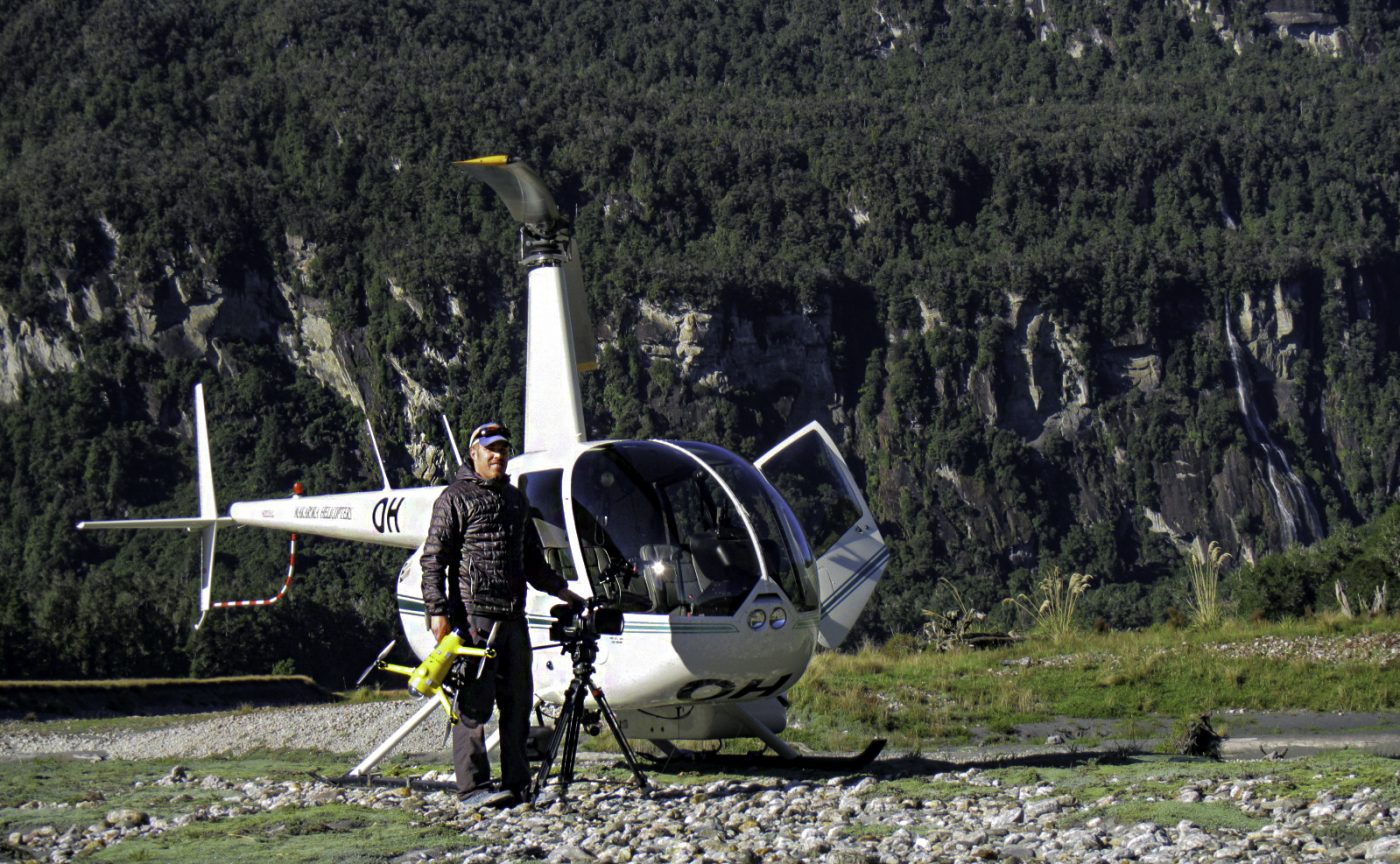Pioneering Aerial Perspectives:
Todd Moen’s Early Mastery of Drone Cinematography
Aerial Eye Evolution
Testing, Testing, Testing
Long before drone filmmaking became common, Todd Moen was experimenting with aerial photography from the ground up...literally. Early in his career, he earned his FAA Part 107 drone license and began designing and building his own aerial rigs from carbon fiber. Using small flight controller “brains” and a collection of handmade components, Todd engineered drones capable of stable, precise flight at a time when few off-the-shelf options existed. Every shoot required hands-on problem-solving...balancing propellers, wiring electronics, securing cameras, and ensuring every motor nut was tight before takeoff. It took endless hours of testing and building to get the job done right. Flying over water or remote wilderness was often nerve-wracking, but the payoff came in capturing those rare, dynamic aerial shots... some of the first in the outdoor industry.
Early drone filming was difficult due to
limitations in technology, such as
poor stability, low-quality cameras, and very short battery life.
-
2007
RC Helicopter And Fixed Gimbal.
The roots of the open-source flight controllers began, initially as a program to stabilize an RC helicopter. -
2008
First cameras in the air
Experimenting with handmade gimbals to tame the wobble and ‘jello effect’ that came with those early flights. -
2010
Massive advancement in flight controller
When DJI introduced its small, 1 inch X 1inch flight controller “brain,” it marked a massive advancement in aerial technology. Manually tuning this system to work with my home-built carbon fiber copter frames was a game changer...suddenly, smoother, more stable flight became possible. It transformed those early, unpredictable builds into much easier flying machines with failsafe option for the at that time "fly away" issues early pilots were having. . -
2013
Multiple Frame Configurations Tested
Todd worked closely with companies developing ultra-light, high-strength carbon fiber components for both quad and hex configurations of his aerial machines. Countless variations were tested—different frame layouts, materials, and even aluminum arms—all in pursuit of the perfect balance between vibration reduction, durability, and weight. Each new setup brought its own lessons, pushing the boundaries of what early aerial cinematography could achieve. -
2014
Quad H20 From Europe Was Todds Goto
A new frame design from Europe opened another chapter in Todd’s aerial experimentation. He integrated the DJI multirotor flight controller into this innovative frame, which could land and take off from water... a next-level tool for filming with a GoPro-style camera mounted to the frame of the Quad H20 Frame. This breakthrough made it possible to capture one-of-a-kind footage of salmon runs from the water’s surface. The machine could float gently with the current, filming the fish in their natural environment, and then lift off again when the shot was complete... some of the first footage of its kind ever recorded. -
2014
RotoDrone Magazine Unveils Premier Issue
RotorDrone Magazine honored Todd in its premier issue, featuring his recent aerial work at Strobel Lake in Argentina. The article highlighted Todd’s experience traveling the globe with his aerial machine and offered insight into his approach to camera settings, flight techniques, and managing the challenges of filming in one of the windiest places on earth. It was a recognition of both his technical expertise and his adventurous spirit in pushing the limits of aerial cinematography. -
2016
Phantom and three-axis, self-stabilizing system
Eventually, Todd began experimenting with installing his own self-designed gimbal on the Quad H20. The modification meant it could no longer land on water, but the results were worth it—the footage was remarkably stable, captured with a mounted Sony RX100 and the new lightweight GoPro camera. Around this time, DJI revolutionized the field with the release of its Phantom series, a true turnkey system ready to fly right out of the box. For Todd, it was something he could only have dreamed of a decade earlier. DJI’s innovation changed everything—no more tightening prop nuts with wrenches, hauling oversized Lipo batteries, or flying using massive SpeKtrum transmitters. And best of all, no more painstakingly hand-balancing propellers with sandpaper just to get jello-free footage. -
2015
Aerial Eye Was Born
During this time at Catch Magazine, Todd began receiving dozens of emails from readers curious about his aerial cinematography. Filmmakers, photographers, and drone enthusiasts reached out with questions about everything—from camera settings and flight controller tuning to the techniques behind his smooth, cinematic aerial shots. The response was overwhelming and inspiring. In 2015, Orvis featured Todd’s groundbreaking aerial work in an article about Catch Magazine’s new series, “Aerial Eye,” introduced in Issue 41. The feature marked a milestone...recognition of years of innovation and hands-on experimentation that helped shape the early days of drone filmmaking in fly fishing media. -
2018
DJI Takes Over
By 2019, the drone industry was firmly dominated by DJI. Over the years, Todd has owned a dozen or so ready-to-fly drones for his work around the world. The technology has advanced so far that using drones today is almost too easy...taking some of the thrill out of the early days of hands-on innovation. But it’s also freed him to focus on what matters most: capturing powerful imagery from the air. No longer does he have to worry about whether he pressed the record button before takeoff or deal with the short two-minute flight times of those early, cumbersome builds. Today, drones are a standard part of every photographer’s toolkit...capable, compact, and ready to fly within minutes of unboxing. With rapidly evolving technology, improved battery life, and unmatched ease of use, drones have become an essential tool in modern visual storytelling.
Todd Moen
When, while the lovely valley teems with vapour around me, and the meridian sun strikes the upper surface of the impenetrable foliage of my trees.
